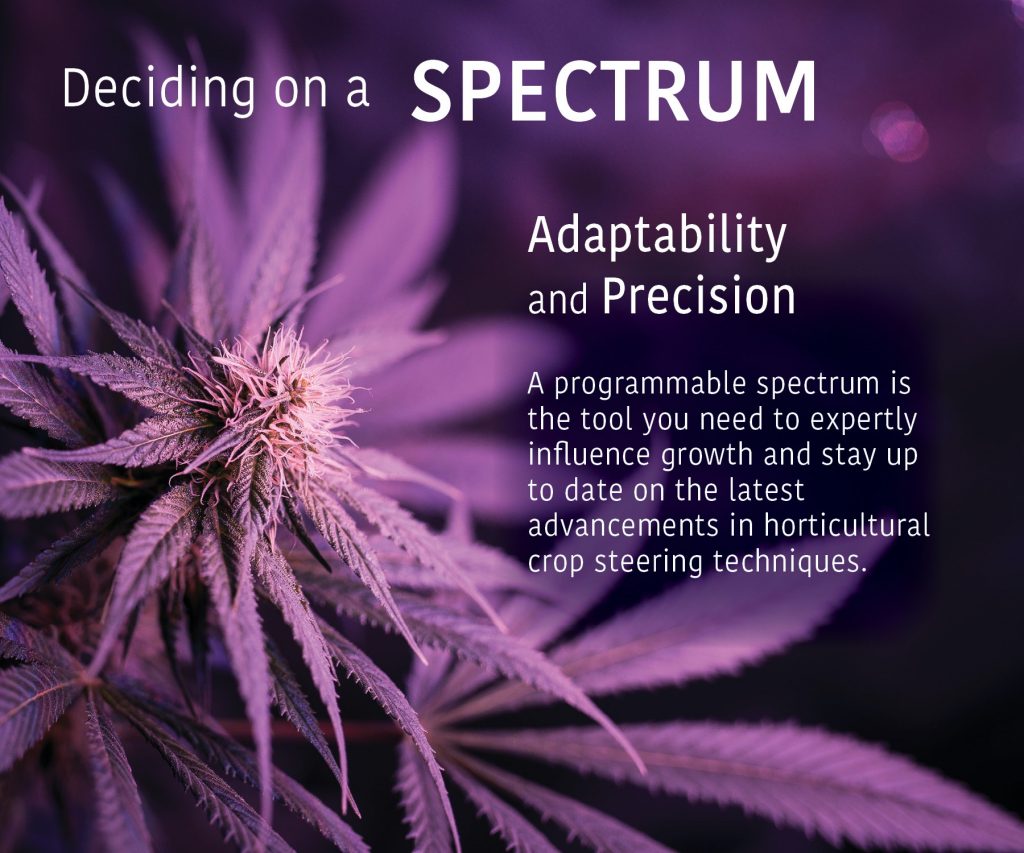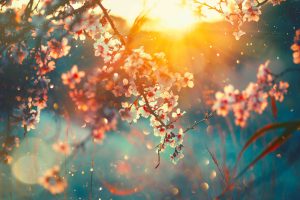The Rising Brightness in Cannabis Cultivation Facilities
What is Photomorphogenesis?
Research into photomorphogenesis, the process of how plants change their development in response to light wavelengths, has become of particular interest to horticultural scientists. Previously, the most popular understanding of how plants use light was from the model of photon absorption by chlorophyll. While this model is a great visual for photosynthesis, it leaves out a large portion that explains how plants see the world and make decisions.
Different wavelengths of light are used by the plant to make choices about their environment. Some common examples of photomorphogenesis are seen when plants lean towards light sources, change color or shape with the seasons, and know just when to flower so their seeds will germinate in the spring. Plants use the ratio of red light to far red light to sense when they are in the shade, and respond by stretching to be longer and taller in an attempt to reach the sun. This shade avoidance response is already being used by horticulturalists growing greens such as lettuce, where long leaves are the goal. But what about farmers trying to grow dense, heavily fruited crops, or create specific flavor profiles, shapes, growing periods, or other features? Each color plays a part in photosynthesis and photomorphogenesis, and an understanding of the light recipe is a crucial aspect of horticulture.
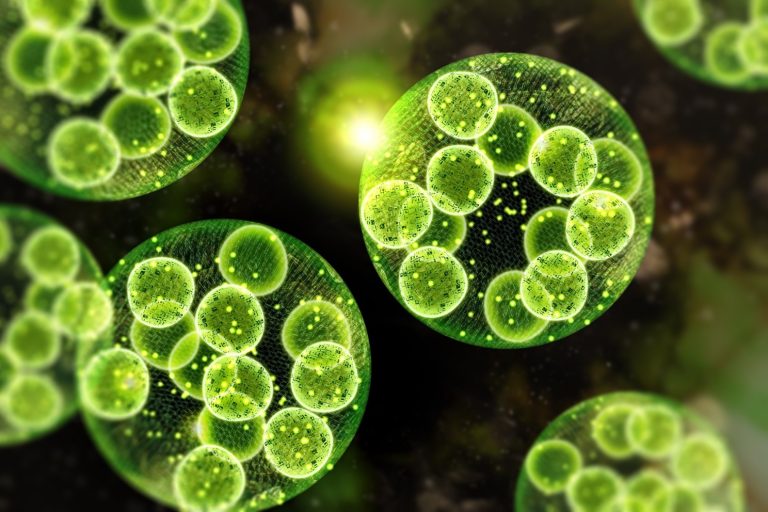
How Plants See Color
Plants use photoreceptors to absorb light and respond to their environment. There are three main types of photoreceptors; Phototropins and Cryptochromes which sense the direction of light and signal the stomata to open and absorb or release oxygen and carbon dioxide, and Phytochromes, which have the most influence on photomorphogenesis abilities. Phytochromes are responsible for shade avoidance, the length of the stems, synthesizing chlorophll, deciding when to flower, and more. Knowing what the wavelengths of light do for plants can help cultivators choose a perfect spectrum.
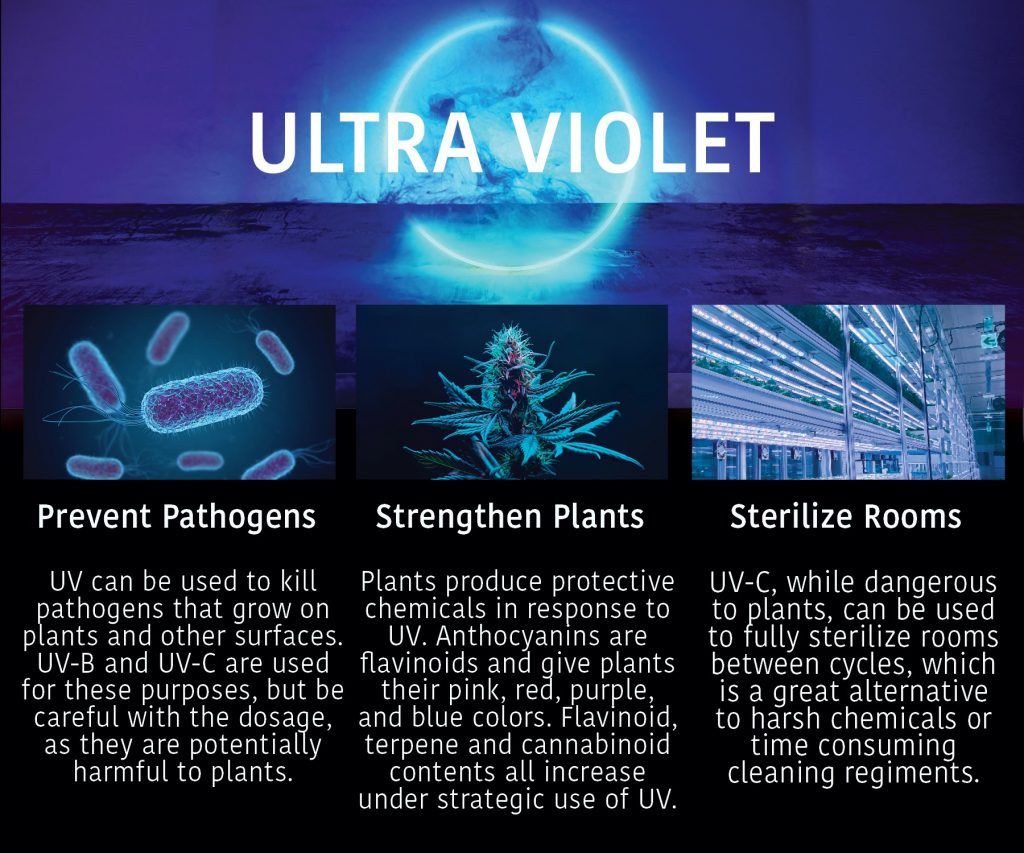
UV Light
Ultraviolet light occurs naturally in sunlight and is invisible to humans. It is extremely high energy, and as such has the potential to damage plant membranes and cause stress. However, it has some useful properties as well.
Just like how humans tan in response to UV light, plants create protective compounds that can turn the plants a darker or more purple color. It can also enhance terpene content, increase thickness of leaves, and make plants more resistant to environmental stressers.
In low doses, UV light creates thicker, sturdier plants, though it is not very involved in photosynthesis and has the potential to be damaging.

Blue Light Inhibits Elongation
Blue is one of the main two colors absorbed by plants during photosynthesis, and in nature is most abundant in the spring. It’s high energy and drives foliage production, and is the natural signal for new growth. Its photomorphic effects are to inhibit enlongation to create short, thick, dense plants, to increase root development, to increase stomatal opening, and can increase terpene retention in cannabis, which results in improved flavor and aroma.
Plants grown without enough blue light are sparse, tall, and weakly colored with thin stalks, and plants grown under high blue light tend to be dense, short, and dark.
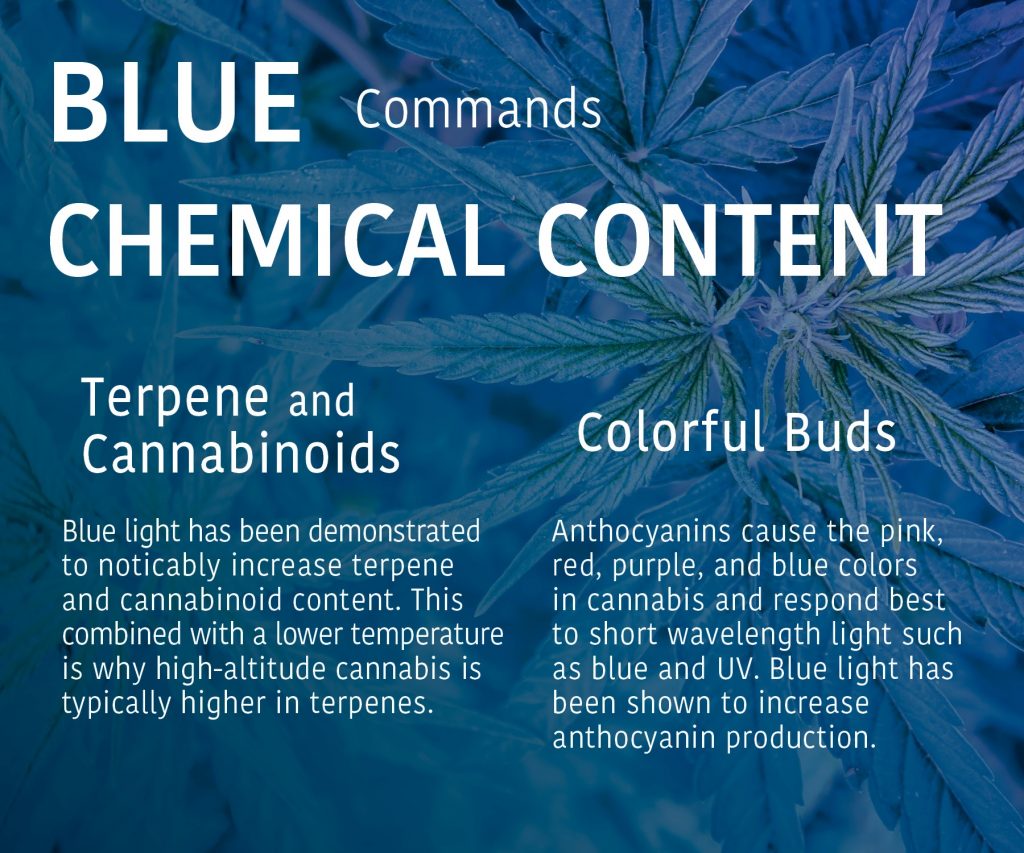
Blue Commands Chemical Content
Anthocyanins are flavinoids that cause the pink, red, purple and blue colors in cannabis. They’re pH sensitive, and appear more red in low pH (acidic) conditions, and fade to blue as the pH rises. Anthocyanins respond best to short wavelength light such as blue and UV.
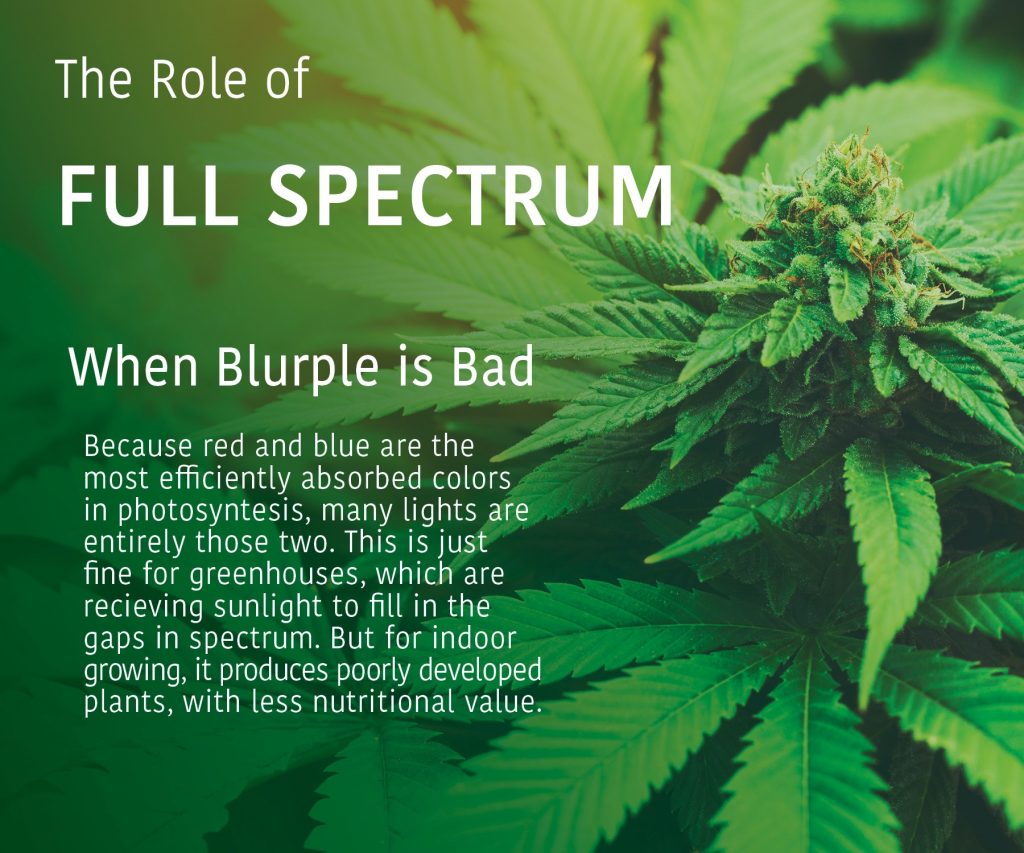
Full Spectrum
Some LED manufactuerers use primarily red and blue diodes, which has been named ‘blurple’ by the community. While red and blue are the most efficiently absorbed during photosynthesis, the absence of other colors creates noticably weaker, less flavorful plants with poor development. Blurple lighting is still appropriate in some areas, such as early growth, microgreens or as supplimental lighting in greenhouses, but does a poor job of developing cannabis to its full genetic potential.
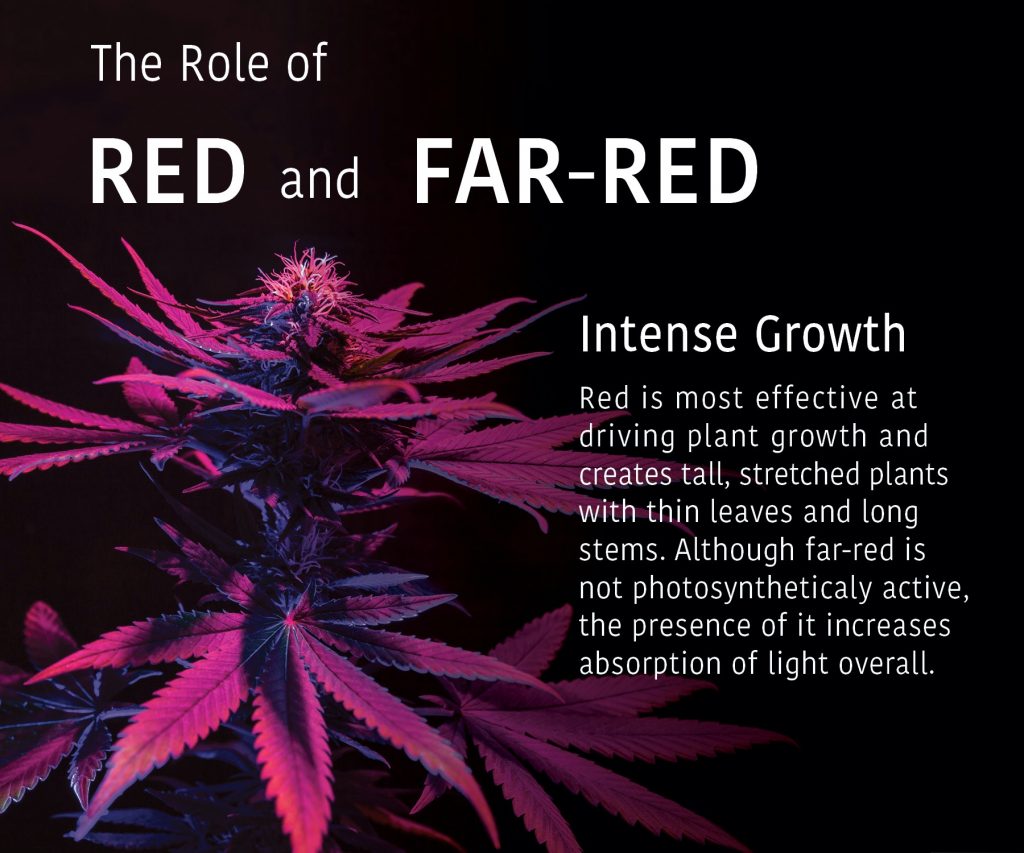
Red and Far Red
Red is most effective at driving plant growth, and is the biggest energy contributor to photosynthesis. Isolated red light creates tall, stretched plants with thin leaves and long stems, as it is the color that most strongly drives growth.
Red also drives flowering. To accurately predict when it’s time to flower, plants must know what season it is. In the summer, the light has a high blue content, which fades to red when fall comes due to the lower angle of the sun. This difference is sensed by plants, who use the increased red to signal that it’s time to flower. Flowering spectrum are therefore typically high in red to mimic a natural autumn sky.
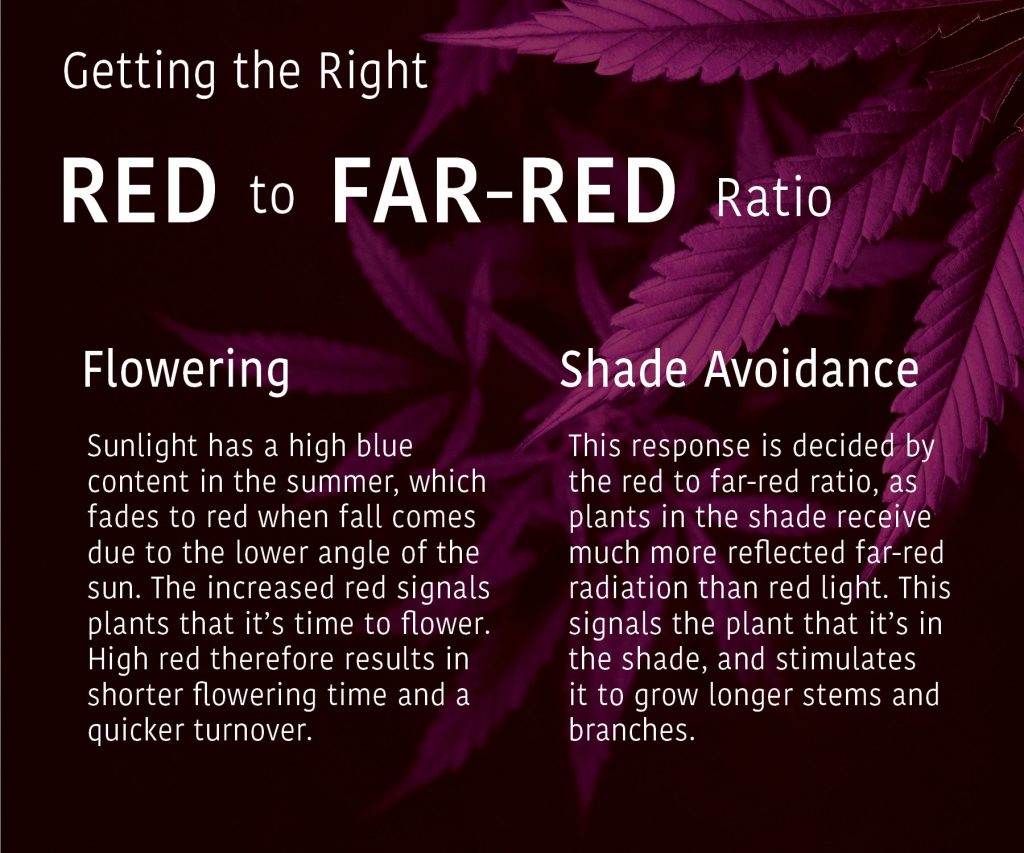
Shade Avoidance
Plants also use red light for photomorphogenesis. Red light and far-red light are absorbed by two forms of phytochrome, Pr and Pfr, respectively. The ratio between Pfr and Pr is how plants sense seasons, day lengths, dawn and dusk, and is how they decide when to flower and which direction to grow.
Far-red shade avoidance response is decided by this ratio, as plants in the shade receive much more reflected far-red radiation than normal red light. A high far-red to low red ratio tells the plant it’s in the shade, and stimulates it to grow longer stems and branches. This means that too much far-red in a spectrum can make a plant ‘leggy’ and sparse, which is undesirable in most cultivated plants.
How Is this Being Used?
In addition to keeping up with top research and changing seasons at the touch of a button, it also plays a major role in phytochemical development, which creates the unique flavor and effect profiles caused by cannabis’s abundance of terpenes. Terpenes are hydrocarbons that a plant produces for a variety of purposes, such as attracting pollinators, warding off predators, protecting against diseases, and more. Mint, rose, black pepper, oregano, honeysuckle, sage, and cypress get their alluring scents from their phytochemical profiles.
